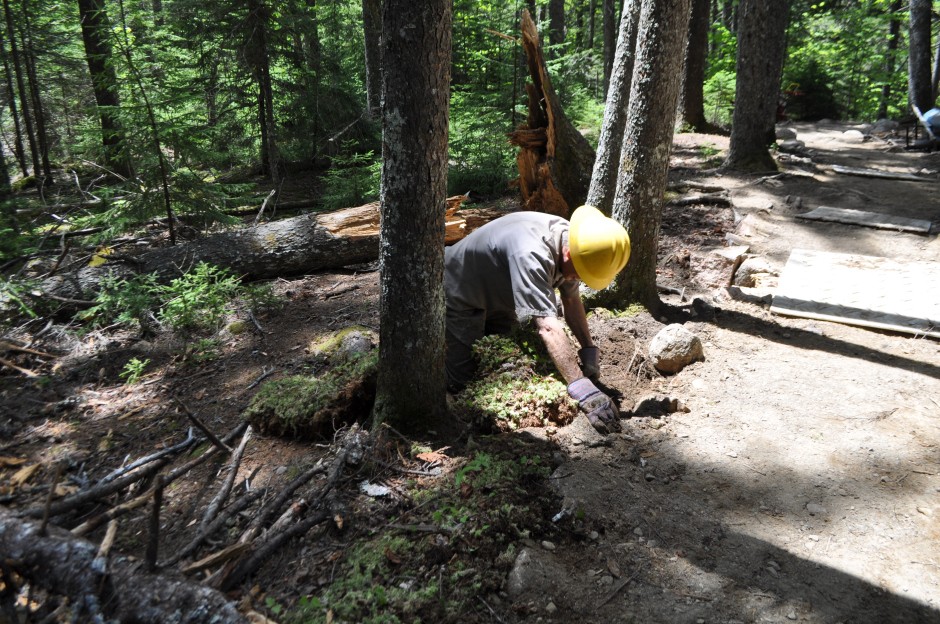Acadia Trails: It’s a Lifestyle, NOT a Gig!
After spending the week at Acadia National Park last week, I will never look at another hiking trail the same way again.

The third day of our trip was all about trails. The morning kicked off with an introduction to the history and creation of Acadia’s extensive and highly crafted system of hiking trails, led by Margie Coffin Brown, who worked at the Olmsted Center for many years before starting her current position as the Integrated Resources Manager at Minute Man NHP. While with OCLP, Margie authored a Cultural Landscape Report on the hiking trails of Acadia, called Pathmakers. I had a chance to read through some of the report over the course of our week in Acadia, and, man, it is one heck of a document! Seriously, if you ever go hiking in Acadia, I encourage you to pick up a copy (or read it here). It details the history and characteristics of every single trail in the park, so you can learn the age and design ethos behind any trail you visit.
What came next was by far my favorite part of our trip to Acadia: getting to learn about the maintenance and care of the park’s trails from Acadia’s own Trails Foreman, Gary Stellpflug! We started out with a visit to the park’s trails workshop, a fascinating place full of character and history. The walls are lined with old trail signs from the park, which we all thoroughly enjoyed gawking at.
Afterward, we hit the trails! With Gary as our guide, we hiked up the Jordan Pond Trail to see some trail maintenance work in action. Several members of the trails crew were stationed at various sections along the trail and were working to improve it by installing new stone checks, creating “Jordan Pond style header walls,” and building new causeways. The new or improved features will help prevent the trail from washing out or eroding during large storms.
Seeing how these features are constructed gave me an immense appreciation for the hard work and design that goes into them. We learned how the trails team uses hi-lines that are rigged up to the trees to carry granite boulders, many of which weigh several hundred pounds, down the mountain to the desired location. The boulders have to be drilled or hammered to the right size and shape and then wrestled into their carefully chosen place in the trail. We also saw several exposed design features that hikers don’t normally get to see when the finished trail is covered over with dirt, such as the crushed stones and retaining walls that help the trails drain water and hold their shape.
It’s intensely physical work, but it also requires a high level of skill and craftsmanship. The beautiful design of the park’s trails and attention to detail was astounding. At one point, we even watched one member of the trails team transplant moss from the surrounding forest to create a subtle border that delineates the trail from the forest, while blending seamlessly into the natural surroundings.
A member of the Acadia trails team transplants moss to create a border along the trail.
Above all, what really came through during our time with Gary was his passion and heartfelt dedication to his work. While Gary has worked at Acadia for over 30 years now, and getting to spend every day on the park’s hiking trails is a definite perk, he was careful to convey that he doesn’t work for the National Park Service because it’s fun. “It’s not a ‘gig,’” he told us repeatedly, while holding back tears. “It’s a lifestyle.” Gary does what he does, because he cares deeply and wholeheartedly about Acadia National Park and the mission of the National Park Service. This is a common thread I have seen in everyone I have met so far who works for the National Park Service and one of the most inspiring aspects of being an intern here. I hope to someday find myself in a career that I can dedicate myself to as fully and passionately.
Thanks for showing us the way, Gary!
Until next time,
Clare



